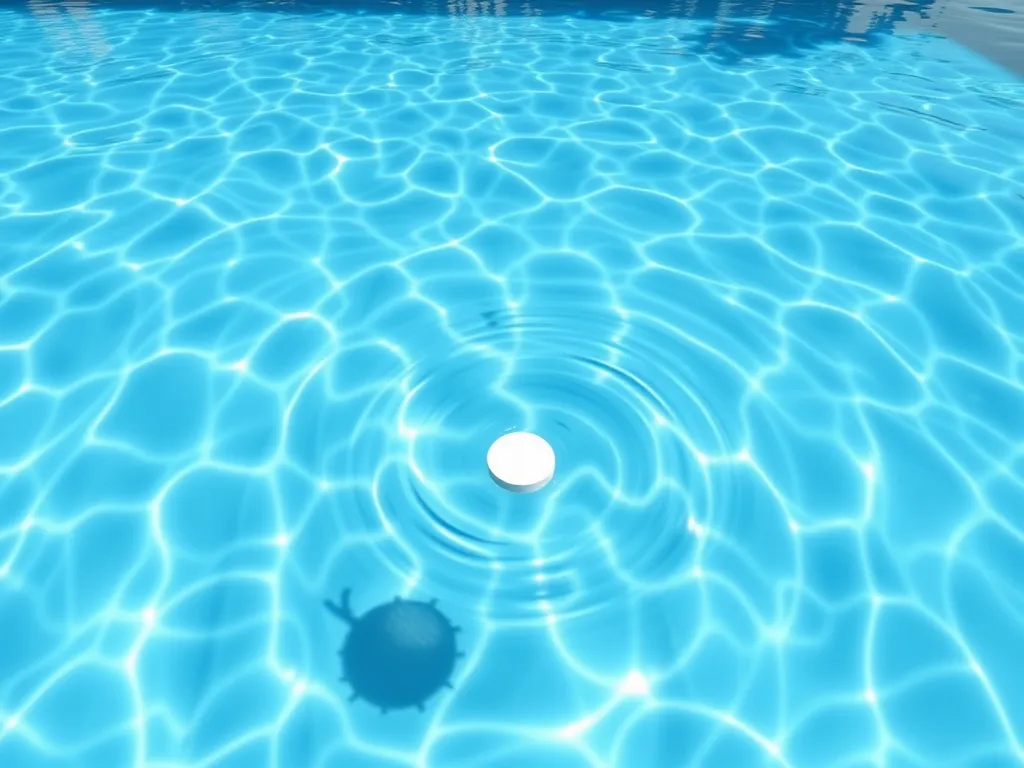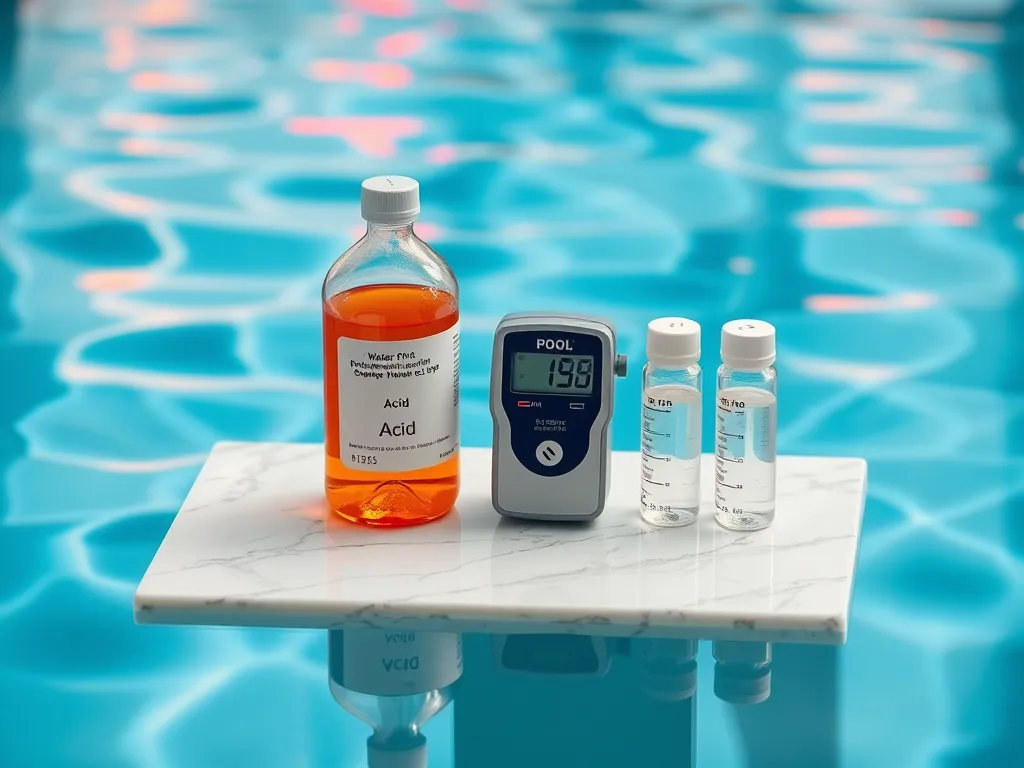Ph Adjustment Calculator
Published on: May 1, 2025 | Last Updated: August 2, 2025
Written By: Rachael Weatherbottom
Need to adjust water pH for pools, aquariums, or gardening? Our pH calculator helps determine how much acid or base you need. Enter your current levels, volume, and target pH. Get instant results showing required adjustments. Works for various solutions like muriatic acid or sodium bicarbonate.
Ph Adjustment Calculator
Neutral pH is 7. Values below are acidic, above are basic. Add acid to lower pH or base to raise it. Always add small amounts gradually.
How to Use
- Measure current pH with test strips
- Enter your desired target pH
- Input total liquid volume
- Enter your acid/base concentration
Note: Temperature and impurities affect results. Wear protective gear when handling chemicals.
Key Factors Influencing Ph Balance in Swimming Pools
Maintaining proper pH levels (7.2–7.8) requires analyzing variables that destabilize water chemistry. These five elements directly impact equilibrium:
Water Source Composition
Municipal water or well water contains dissolved minerals affecting initial pH. For example, hard water with 200–400 ppm calcium carbonate raises pH. Soft water below 50 ppm may require alkalinity increasers. The relationship between pH and alkalinity is important for maintaining water quality. Alkalinity helps buffer pH changes, ensuring stability in water systems.
Environmental Contaminants
Rainwater (pH 5.0–5.5), windblown debris, and UV radiation alter chemical stability. A 1-inch rainfall in a 15,000-gallon pool can drop pH by 0.5 units.
Bather Load and Organic Matter
Each swimmer introduces 0.5–1.0 grams of organic compounds hourly. Body oils, sweat (pH 4–6), and urine accelerate pH fluctuations. Heavy usage may demand daily testing.
Chemical Additives
Chlorine tablets (trichlor) lower pH by 0.6 per 10 ppm. Liquid chlorine (sodium hypochlorite) raises pH temporarily. Saltwater generators produce alkaline byproducts, increasing pH 0.1–0.3 weekly. Maintaining the right pH is crucial for pool health. A low pH pool can lead to corrosion of equipment and discomfort for swimmers.
Pool Surface Material
Concrete (gunite) pools leach calcium hydroxide, raising pH for 12–18 months after plastering. Fiberglass and vinyl liners have minimal impact.
Ph Interactions With Other Water Chemistry Parameters
pH doesn’t operate in isolation. These four parameters create cascading effects:
Total Alkalinity (TA)
TA acts as pH’s buffer. Maintain 80–120 ppm. Below 60 ppm, pH swings exceed 0.5 daily. Above 150 ppm, pH drifts upward stubbornly.
Calcium Hardness
Ideal range: 200–400 ppm. Low calcium (<150 ppm) causes corrosive water, eroding surfaces. High levels (>800 ppm) create scaling, reducing heater efficiency by 15–20%. Maintaining the right balance of minerals is important for overall water quality. This balance is often measured and adjusted using ideal pH levels in water systems.
Sanitizer Efficiency
At pH 8.0, chlorine’s effectiveness drops 50%. Bromine remains stable but requires pH below 7.8 for optimal oxidation.
Cyanuric Acid (CYA)
CYA above 80 ppm buffers chlorine excessively, requiring pH adjustments to 7.2–7.4 for proper sanitation. Use the HassTech CYA/pH correlation chart for precise corrections. Lowering the cyanuric acid levels in your pool can improve chlorine efficiency. A lower CYA pool helps maintain better water quality and easier maintenance.
Also See: Chlorine Dosage Calculator: Optimize Water Treatment

Step-by-step Ph Adjustment Protocols
Follow these industry-standard procedures from the National Swimming Pool Foundation (NSPF):
- Test pH and TA using a digital meter or Taylor K-2006 kit
- Calculate required chemical dose based on current vs. target values
- Add ¾ of calculated chemicals to the deep end with pump running
- Retest after 4 hours of circulation
- Make final adjustments if needed
Chemical Dosage Table
| Chemical | pH Effect | Dosage per 10k Gallons |
|---|---|---|
| Muriatic acid (31.45%) | Lower 0.1 | 6 oz |
| Sodium carbonate | Raise 0.1 | 1.5 lbs |
| CO2 injection | Lower 0.1 | 8 oz gas |
| Aeration (forced) | Raise 0.1 | 12 hours |
Seasonal Ph Management Strategies
Summer Operations
High temperatures accelerate chlorine consumption, requiring pH testing every 48 hours. Use 10% diluted acid for gradual corrections.
Winterization
Set pH to 7.2–7.4 before closing. Cold water (below 50°F) slows chemical reactions—allow 72 hours between adjustments.
Monsoon Season
Heavy rainfall dilutes TA. After storms, test and add 5 lbs sodium bicarbonate per 20k gallons before pH correction.
Common Ph Management Errors
- Adding acid directly to skimmers (damages equipment)
- Adjusting pH before balancing TA
- Using outdated test reagents older than 18 months
- Ignoring temperature compensation in digital meters

Cost Analysis Of Ph Adjustment Methods
| Method | Initial Cost | Annual Cost* | Accuracy |
|---|---|---|---|
| Manual dosing | $50 | $120 | ±0.2 pH |
| Peristaltic pump | $400 | $80 | ±0.1 pH |
| CO2 system | $2200 | $300 | ±0.05 pH |
*Based on 50k gallon pool, 8-month season
Advanced Ph Control Technologies
Automated Controllers
Pentair IntelliChem ($1,800) monitors pH and ORP, injecting acid or CO2 as needed. Calibrate sensors every 30 days.
Borates Buffering
Adding 50 ppm boric acid reduces pH fluctuations by 60%. Cost: $2.10 per pound. Use only in non-saltwater pools.
Ionization Systems
Copper/silver ionizers (e.g., Nature2) allow higher pH (7.6–7.8) without scaling. Combine with 0.5 ppm chlorine.
FAQs: Ph Balance in Swimming Pools
Why Does Ph Rise Constantly in Saltwater Pools?
Salt cells generate sodium hydroxide during chlorine production, increasing pH 0.1–0.3 weekly. Install acid injection or CO2 systems for stability.
Can I Use Vinegar to Lower Ph?
White vinegar (5% acetic acid) works temporarily but adds 29 ppm acetates per quart in 10k gallons. Acetates fuel algae growth above 50 ppm.
How Does Ph Affect Vinyl Liners?
pH below 7.0 weakens plasticizers, causing brittleness. Above 7.8 promotes metal staining. Maintain 7.4–7.6 for liner longevity.
What Causes Ph Lock?
Calcium saturation over 500 ppm combined with high TA (>180 ppm) creates pH lock. Use sequestering agents like HEDP 60% at 4 oz per 10k gallons.
For scenario-specific guidance, check out My Pool Calculator to model chemical interactions and dosage requirements.
Additional Resources for You:
- Tamminen, T. (2019). The Complete Pool Manual for Homeowners: A Step-by-Step Maintenance Guide. New York, NY: Skyhorse Publishing.
- Sensorex: Our pH Calculator Can Find Your pH Answers
- pH Temperature Correction Calculator | Atlas Scientific
- Brewing Water Ph Calculator – Calculator Academy
- Adjust pH Level – Free Pool Calculator
A pool care geek who’s been testing water chemistry since she was tall enough to reach the skimmer.
Chemical Dosage, Pool Calculators


